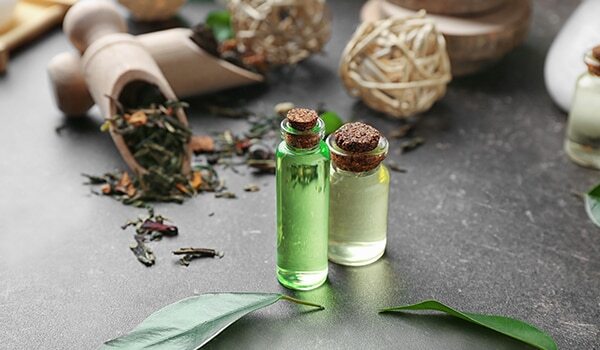- 01 Benefits of tea tree oil for acne
- 02 How to use tea tree oil for acne?
- 03 1. Pure tea tree essential oil
- 04 2. Tea tree oil + Almond oil
- 05 3. Tea tree oil + Lemon juice
- 06 4. Tea tree oil + Lavender oil
- 07 5. Tea tree oil + Baking soda
- 08 6. Tea tree oil + Aloe vera gel
- 09 FAQs about tea tree oil for acne
Your skin needs a good dose of natural ingredients just as much as your body. Treating conditions such as acne,** acne scars**, inflammation, itchiness and cysts using natural remedies is the best way to maintain the health of your skin. If you're someone who deals with excessive oiliness and has acne-prone skin, then here's a wonder ingredient that you may want to become best friends with. We're talking about Tea Tree Oil! Regular use of tea tree oil for acne treatment can show effective results. From removing bacteria to reducing oiliness, tea tree oil is everything your acne-prone skin needs. On one hand, the antimicrobial properties of tea tree oil help prevent microbial growth, whereas, it's anti-bacterial properties on the other work against destroying acne-causing bacteria and reducing pimple breakouts. Pampering your skin with tea tree oil helps remove grease and grime easily and works as a moisturizing agent too. Using tea tree oil for acne can work its way to unclog pores thereby helping to disinfect the skin. This essential oil has the power to unblock sebaceous glands by penetrating deep into the skin.
01Benefits of tea tree oil for acne
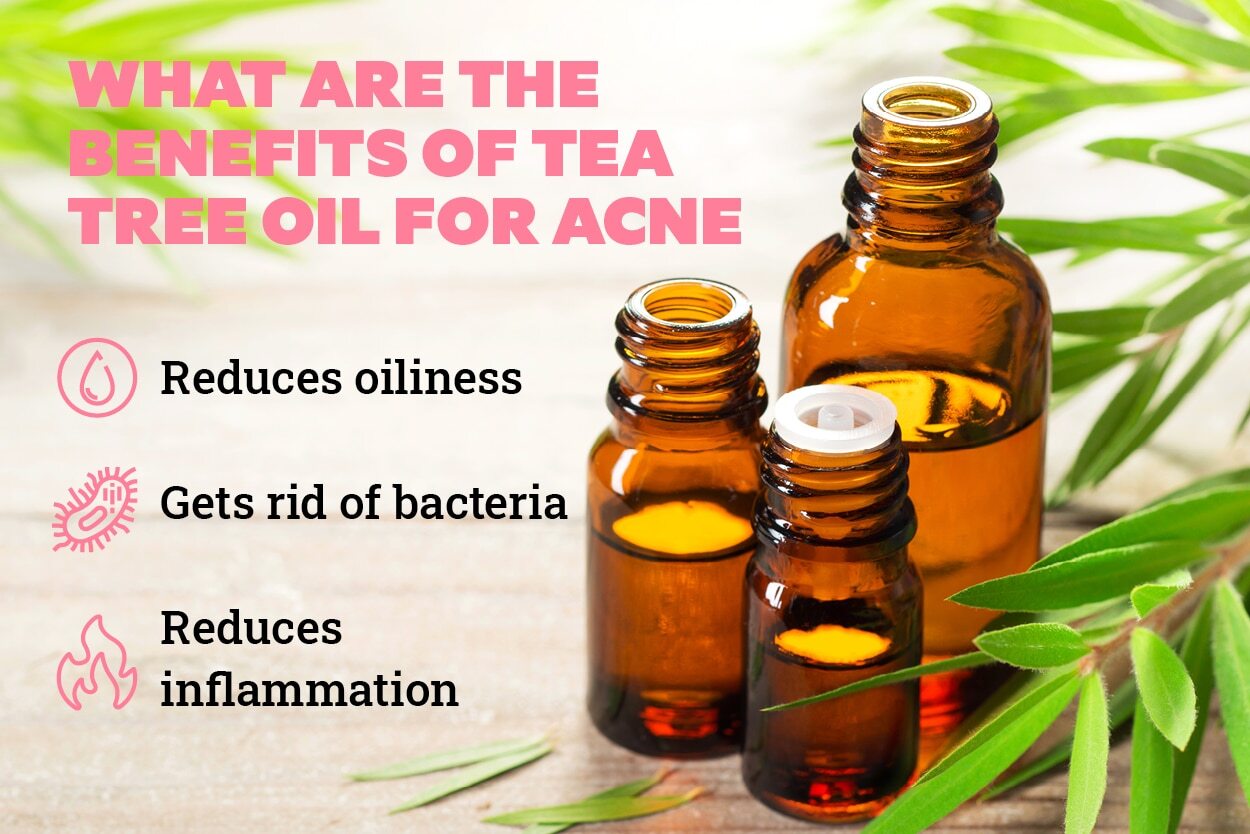
Here are some benefits of tea tree oil for acne that you should know about.
1. Reduces oiliness
Excessive oiliness is a common concern amongst people who have acne. Tea tree oil contains antiseptic properties which helps reduce oiliness on the bridge of the nose, cheeks and forehead. If you tend to look over-shiny after applying makeup, then try a tea tree oil treatment at home to reduce oiliness on the face.
2. Removes bacteria
The antimicrobial properties of tea tree oil protect the skin from harmful bacteria which in turn cures a number of skin issues such as dullness, itchiness, acne, sensitivity and inflammation. However, it is important to store tea tree oil correctly or else the antimicrobial activity of the oil could decline. Therefore, it's best to store it in a cool and dark place, away from air, light and moisture.
3. Reduces inflammation
Acne and acne scars can bring your skin health down. However, using tea tree oil for acne has a number of skin benefits. Its anti-inflammatory properties help reduce inflamed acne lesions and as well as soothe your skin by reducing the swelling.
02How to use tea tree oil for acne?

Now that you know how beneficial tea tree oil is for acne, we're sure you can't wait to use it. Below are 6 different ways to use tea tree oil for acne:
03Pure tea tree essential oil
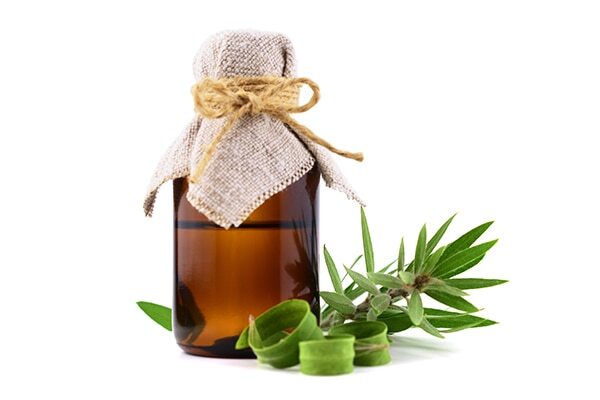
Step 1: Take a cotton swab or Q-tip and dip it in water Step 2: Pour one or two drops of tea tree essential oil on the cotton swab or Q-tip and apply it directly to the affected area. Make sure you don't rub, only dab gently Step 3: Leave it on overnight and rinse with cool water the next morning Pampering your skin every alternate night with tea tree oil to cure acne can give you effective results. If there is a mild stinging sensation, it is fine. However, if it stings really bad, then it's best you don't apply pure tea tree essential oil directly on your lesions. Instead, use concentrated tea tree oil.
04Tea tree oil + Almond oil

Step 1: Mix together one teaspoon almond oil and two to three drops of tea tree oil Step 2: Dip the Q-tip in the solution and apply it to the pimples Step 3: Either leave it on overnight or wash off in a few hours Benefits: Being rich in Vitamin A, almond oil helps reduce acne. The oil, which easily penetrates skin, is great for removing dirt, impurities, and oil that accumulate in your pores. When mixed with tea tree essential oil, it prevents blackheads and acne. This solution works well for all those with dry, oily and sensitive skin. Using a mixture of almond oil and tea tree oil for acne every alternate day can work wonders for your skin.
05Tea tree oil + Lemon juice
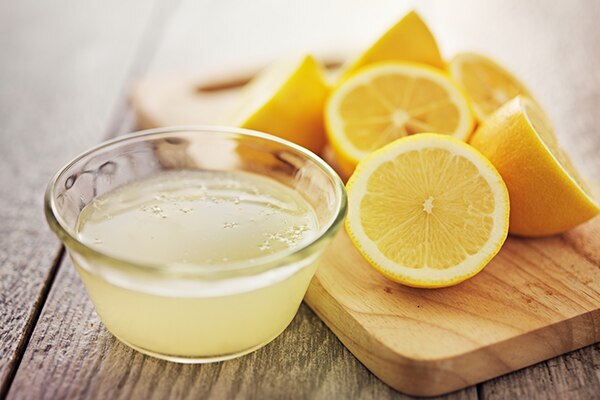
Step 1: Mix one teaspoon diluted lemon juice with two to three drops of tea tree oil Step 2: Dip a Q-tip into the mixture and apply to the pimple spots Step 3: Let your skin absorb the mixture for about 10-15 minutes Step 4: Rinse your face with cold water Benefits: Lemon juice is one of the best ingredients to treat acne. On one hand, its antiseptic properties help kill bacteria which may lead to acne, and on the other, the drying effects of citric acid present in lemon juice helps reduce excess sebum which is also a cause for acne. When mixed with tea tree essential oil, this mixture also helps treat inflammatory acne as well as acne scars. Use the mixture of lemon juice and tea tree oil for acne once in two days for effective results.
06Tea tree oil + Lavender oil
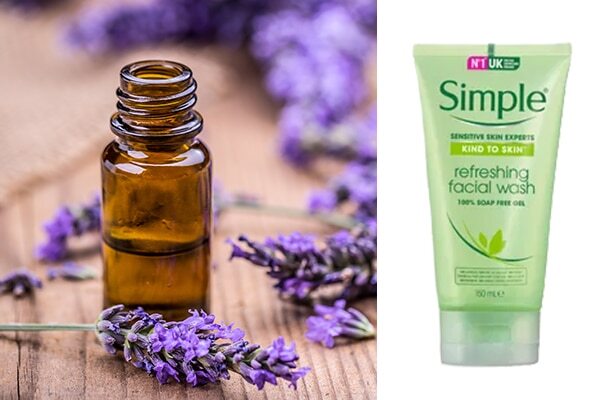
Step 1: Mix together two to three drops of lavender oil and tea tree oil each and one tablespoon jojoba oil Step 2: Store the mixture into a glass bottle for regular use Step 3: Now, take a Q-tip, dip it in the solution and apply it on the acne spots Step 4: Let the blend work into your skin overnight Step 5: Rinse the next morning using a mild cleanser such as the Simple Kind To Skin Refreshing Facial Wash Benefits: Lavender oil helps unclog pores, reduces inflammation and works to kill bacteria thereby preventing and healing acne and acne scars. When diluted with other essential oils, lavender can work wonders in treating acne, clearing out your pores and preventing future breakouts. The mixture of lavender and tea tree oil for acne is one of the best treatments for all those with sensitive skin.
07Tea tree oil + Baking soda
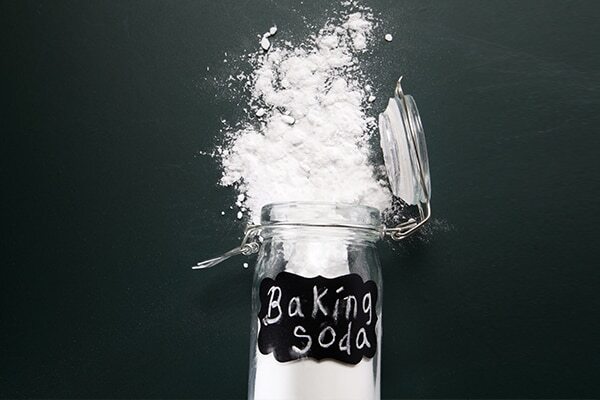
Step 1: Mix together two to three drops of tea tree oil and one teaspoon jojoba or almond oil Step 2: Take one teaspoon baking soda in a bowl and add enough water to make a paste Step 3: Add the oil blend to the baking soda paste and mix well Step 4: Apply the paste on the acne spots and leave it to dry Step 5: Rinse with cool water after about 5 minutes Benefits: Its antiseptic and anti-inflammatory properties are what make baking soda one of the best treatments for acne breakouts and inflammation. However, using baking soda alone on the face is not a good option as it can irritate skin and strip your skin of natural oils. Therefore, mix it with tea tree essential oil to treat acne. Using the mixture of baking soda and tea tree oil for acne once in every two days can unclog pores and reduce the growth of bacteria.
08Tea tree oil + Aloe vera gel
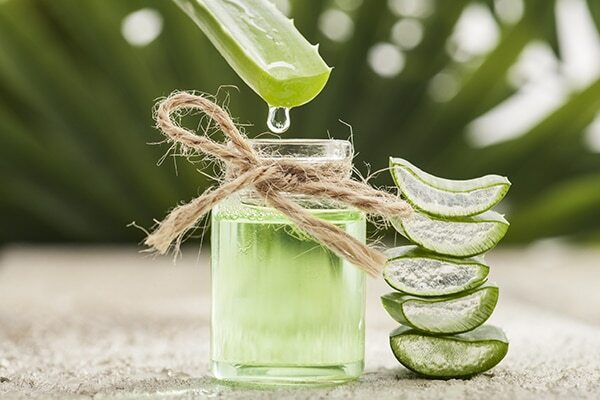
Step 1: Mix one and a half teaspoons aloe vera gel with two to three drops of tea tree oil Step 2: Use a Q-tip to apply the mixture on your pimples and let it dry naturally Step 3: Wash it off with cold water after about 10 minutes Benefits: The anti-bacterial property of aloe vera gel is what makes it an effective treatment for acne. For all those suffering from mild to moderate acne can use aloe gel mixed with tea tree oil for a gentle way to soothe your skin and to reduce acne-causing bacteria. Pamper your skin with a mixture of aloe gel and tea tree oil for pimples thrice a week for effective results.
09FAQs about tea tree oil for acne
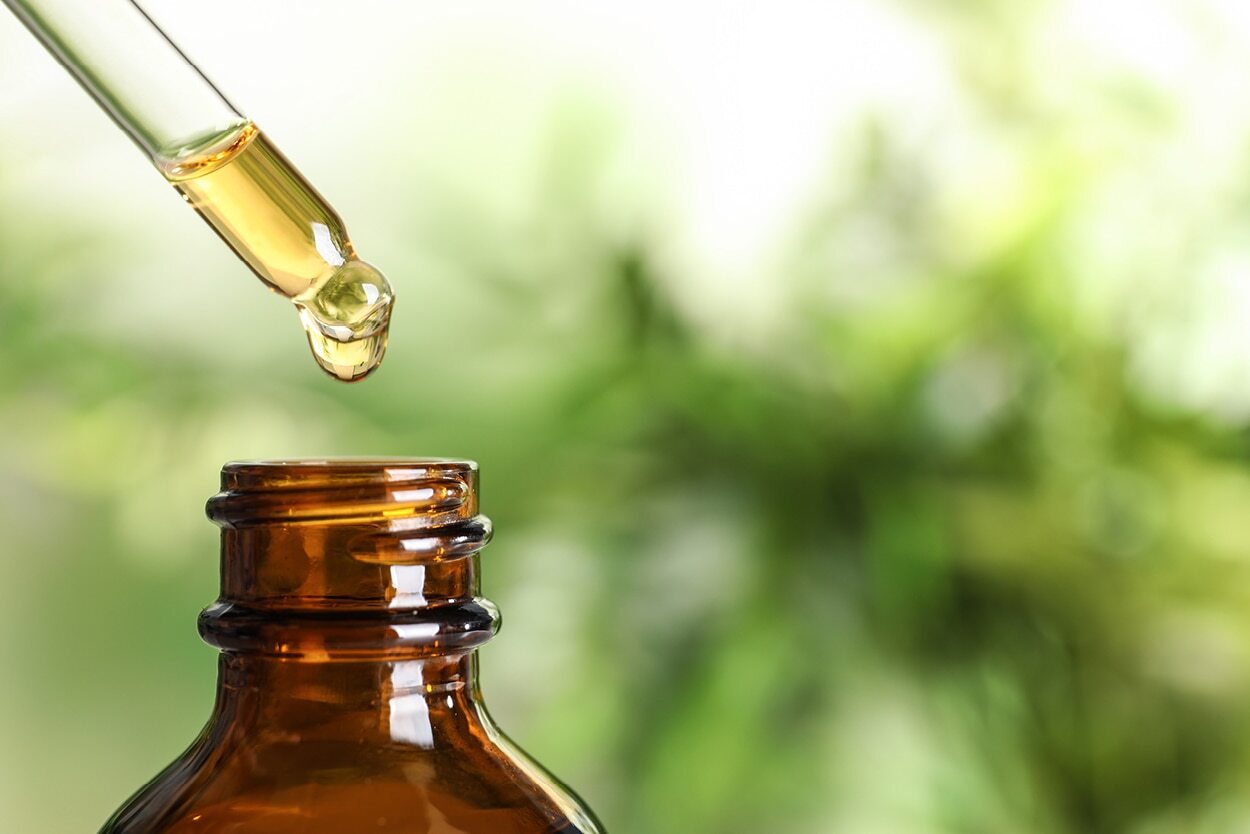
Q. How long does tea tree oil take to work on acne?
**A. **If you use tea tree oil regularly twice a day, then results start becoming visible in 6 to12 weeks.
Q. Can tea tree oil clog pores?
**A. **No, even though it is an oil, tea tree oil cannot clog pores. In fact, it's a non-comedogenic product which means that it cannot block pores.
Q. What essential oils help with acne?
**A. **Apart from tea tree oil, essential oils such as thyme, lavender, rosemary, peppermint and eucalyptus are helpful in combating acne naturally.
Q. Is tea tree oil good for hormonal acne?
**A. **Yes, tea tree oil helps treat hormonal acne as well. It works by treating inflammation that can cause acne.

